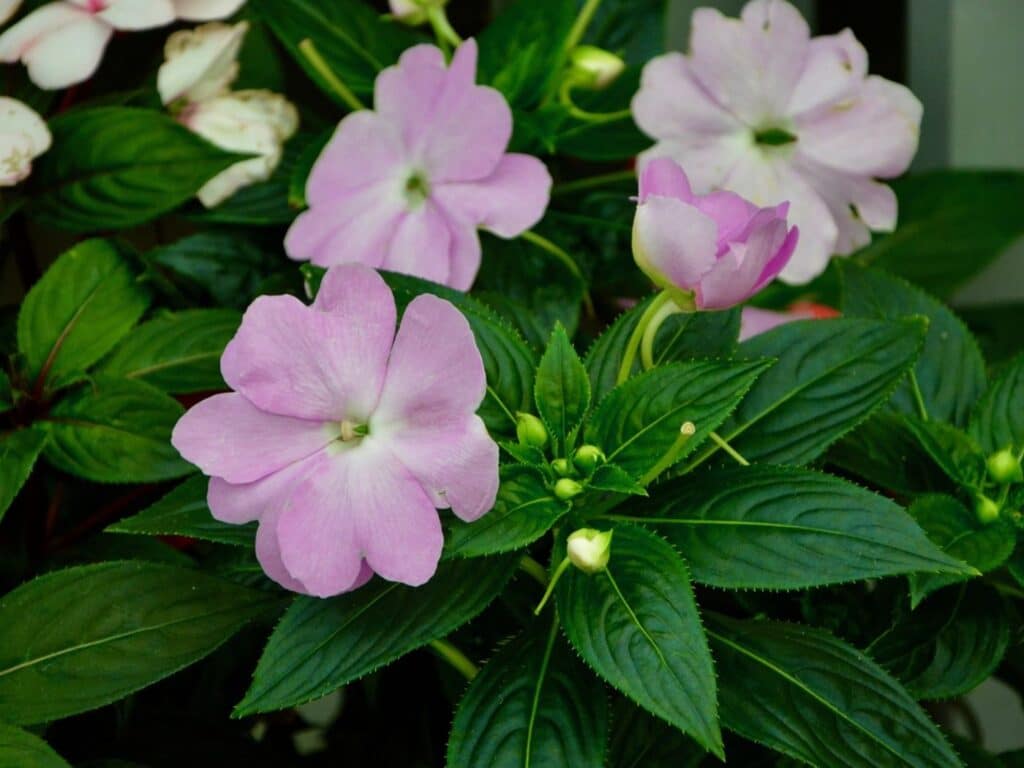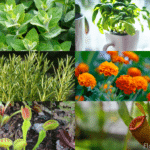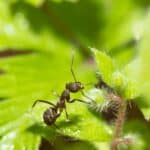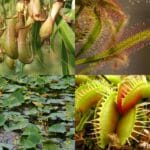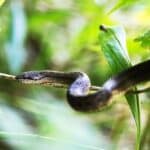Ever looked at your garden and noticed your vibrant impatiens suddenly donning a sickly yellow? It’s a sight that can dampen the spirits of even the most seasoned gardeners. But don’t despair – yellowing leaves are a common issue, and one that’s often solvable.
Understanding why your impatiens’ leaves are turning yellow is the first step to restoring their health. Whether it’s due to overwatering, lack of nutrients, or a pesky pest invasion, this article will guide you through the potential causes and solutions. So, roll up your sleeves and prepare to bring your garden back to its former glory.
Understanding Impatiens Leaves Turning Yellow
Unraveling the mystery of yellowing leaves on your impatiens may seem daunting, but it’s vital to healthy plant life. Subheadings in this segment offer direct specifics and guidance.
Causes of Yellowing Leaves
Detecting the leading causes of yellowing impatiens leaves parlays into proper garden management. First, excessive water often provokes leaf discoloration. Impatiens absorb water rapidly, and overly soaked soil could result in waterlogged roots hindering nutrient uptake, hence the leaf yellowing.
Secondly, insufficient nutrients, specifically nitrogen, are another prominent cause. Nitrogen deficiency stems from poor quality soil or lack of adequate fertilization, leading to yellowing leaves.
Lastly, pest infestations pose a significant threat. Tiny sap-sucking bugs like aphids or spider mites can cause leaf yellowing. These pests feed on plant sap, impairing photosynthesis and leading to discolored leaves.
When to Be Concerned
Remain vigilant about impatiens’ health and make assertive decisions. Yellowing leaves aren’t always a death sentence, but frequent occurrences denote a critical issue. Yellowing leaves accompanied by additional symptoms, such as leaf drop, stunted growth, or curled leaves, indicate an intense problem.
Respond quickly to these signs. Ignoring them may well lead to plant demise, so it’s crucial to act at first notice of distress signs. Understanding the causes and knowing when to worry helps you restore your impatiens to optimal health, reviving your colorful garden in no time.
Nutrient Deficiencies Leading to Yellow Leaves

Identifying Nutrient-Deficient Plants
Spotting nutrient-lacking impatiens becomes straightforward when you know the signs. A key determinant of nutrient deficiency is a uniform, yellow discoloration covering the entire leaf’s surface.
Usually, the leaves lighten in color first, eventually taking on a yellowish hue. The tip-off, however, lies in mid-vein, if it remains green while the rest of the leaf inclines towards yellow, chances are, it’s a nutrient imbalance.
For example, chlorosis, a symptom of iron deficiency, gives the leaves a yellow-greenish tone while veins remain green. Similarly, nitrogen-deficient impatiens showcase an all-over leaf yellowing, starting from the older, lower leaves.
Solutions for Nutrient Deficiencies
Addressing nutrient deficiencies takes three primary actions: testing, adjusting, and maintaining. You’ll want to get a soil test done first. This test breaks down the soil composition in your garden, identifying any nutrient imbalances or deficiencies.
Following this, there’s a need for soil amendments. Nutrient deficiencies are usually rectified by adding the appropriate fertilizers or soil amendments. For example, solutions to nitrogen deficiency include using a high-nitrogen fertilizer or composted manure.
Finally, you’ll want to keep up with regular soil monitoring and maintenance. It ensures a nutrient-rich environment for your impatiens, preventing future instances of yellow leaves. After all, preventative measures often beat solutions.
Watering Issues and Impatiens Health

Turning our attention from nutrient deficiencies to watering issues, let’s delve deeper into understanding how insufficient or excess watering can bring about the yellowing of impatiens’ leaves.
Signs of Overwatering and Underwatering
Impatiens overly saturated with water exhibit a unique discoloration pattern – their leaves turn yellow, starting at the lower leaves and moving towards the upper leaves. Concurrent symptoms include wilting of both the leaves and stems. These plants are among those that do not favor waterlogged soil and quickly suffer oxygen deprivation when their roots become submerged.
Conversely, underwatered impatiens also manifest signs, although varied from those of overwatering. The clue lies in the wilted, drooping leaves that appear dry and are simultaneously turn yellowish-brown.
Finding the Right Watering Balance
Mastering the balance between overwatering and underwatering hinges largely on your observation skills and understanding of plant needs. In the case of impatiens, these annuals thrive in evenly moist soil.
Maintain a routine of watering them thoroughly but infrequently. A good rule of thumb is to water them when the top inch of soil feels dry, ensuring that the water drains well.
Remember, consistent inundation leaves these plants susceptible to root rot and wilt diseases. Meanwhile, a parched environment has its pitfalls too, leading to plant stress, wilting, and diminished vigor.
Checking the soil condition helps achieve just the right level of dampness, avoiding both extremes of water availability. By doing so, you’re keeping your impatiens robust and vibrant, reducing the instances of yellowing leaves.
Diseases That Cause Yellowing Leaves in Impatiens
Common Diseases in Impatiens
Your impatiens, known for their vibrant blooms, may face specific diseases that lead to yellowing leaves. Impatiens downy mildew, a destructive disease, chiefly manifests as light green leaves, which turn yellow over time. A white, cotton-like growth typically on the undersides signals the presence of this disease. It’s caused by the fungus-like, water mold Plasmopara obducens.
Fusarium wilt, another common disease in impatiens, affects the vascular system of the plant, thereby causing yellowing leaves. Its presence becomes evident when your impatiens depict wilting, stunted growth, and discoloration in the stem and leaves.
Another disease, the Botrytis blight, attacks flowers, leaves, and stems of impatiens, forming fuzzy, tan-colored spore masses. It results in the leaves changing their color to yellow.
Prevention and Treatment of Diseases
To prevent and treat such diseases, monitor your plants regularly and adopt good gardening practices. For impatiens downy mildew, action involves removing affected plants and implementing preventative measures for remaining plants. Avoid planting impatiens in the same area for the next two years, considering the soil-borne nature of the disease.
To deal with Fusarium wilt, get rid of diseased plants and avoid re-planting impatiens in the same soil. Incorporating a good-quality compost can help improve soil health and make it less susceptible to diseases.
For Botrytis blight, ensure good air circulation around your impatiens and reduce overhead watering. Applying a general-purpose fungicide can help control the disease, but it’s more about prevention than cure.
In sum, understanding these diseases and their symptoms can help you keep your impatiens healthy and vibrant. Adopting good garden sanitation, combined with the right preventive/curative measures, can aid in tackling these diseases. By doing so, you can preserve the aesthetic appeal of impatiens, known for their brilliant array of colors.
Environmental Stress and Its Impact
Impatiens, adorned with vibrant blooms, face environmental stressors that induce yellowing of their leaves. These stressors span a range of conditions, primarily temperature and sunlight.
Temperature and Sunlight Stress
Impatiens thrive in specific temperature and light conditions. An abrupt change in these paradigms acts as a stress inducer. In terms of temperature, you’ll find Impatiens prefer a range between 60 to 85 degrees Fahrenheit. Exposure to temperatures outside this range elevates stress levels in the plant, causing its leaves to turn yellow.
Similarly, Impatiens are shade-loving plants. Direct, intense sunlight singes the foliage, manifesting as a yellow hue. Essentially, deviation from their comfort range of temperature and sunlight acts as an environmental stressor and triggers the yellowing of leaves in Impatiens.
How to Mitigate Environmental Stressors
You can easily mitigate these environmental stressors imposing upon your Impatiens with strategic plant management. Adapt your gardening habits to handle temperature fluctuations. Maintain a consistent, comfortable temperature range for the plants by using garden shade cloths during heatwaves, or introducing them to indoor growing areas in cold weather.
Address the issue of sunlight stress by planting Impatiens in dappled shade or an area with filtered sunlight. If you’ve planted them in an area of direct sunlight, consider relocating them to a shadier area. This adjustment not only prevents yellowing of leaves but also promotes lush, vibrant growth.
By recognizing and addressing these environmental stressors, you’re taking crucial steps to protect your Impatiens from losing their vibrant charm due to yellow leaves.
Proper Care for Healthy Impatiens
To ensure your impatiens remain vibrant and healthy, you need proper care practices closely aligned with the plant’s specific needs. Effective care of impatiens goes beyond just watering and light exposure, but extends to areas like the use of appropriate soil and fertilizers, and the practice of effective pruning.
Ideal Soil and Fertilizer Use
Impatiens delight in well-draining soil, rich in organic matter. A soil pH between 6.0 and 6.5 is best for these plants. Organic matter, being plentiful in nutrients, boosts the health and vibrancy of your impatiens.
Additionally, consider adding a slow release fertilizer at planting. A nutrient regiment rich in nitrogen aids in the flourishing of lush, green leaves. However, pay attention to over-fertilization as it’s a common mistake gardener’s make leading to an unhealthy plant.
Pruning and Maintenance Tips
Regularly prune your impatiens for better air circulation and to maintain a compact appearance. To encourage bushiness, pinch back stems, but be moderate in your pruning as excessive cutting back can harm the plant. Keep a lookout for dead or diseased leaves and remove them promptly before they affect the surrounding health of the plant.
To maintain the overall vitality of your impatiens, consider an application of balanced liquid fertilizer every 2 weeks during the growing season. By following these maintenance tips, you can foster a lush and thriving environment for your impatiens.
FAQs
What causes yellowing leaves in impatiens?
Yellowing leaves in impatiens can be caused by numerous issues such as overwatering, pests, and nutrient deficiencies. Swift action is necessary to prevent further damage.
What are some signs of under or overwatering impatiens?
Impatiens show signs of overwatering through wilted, yellowing leaves and signs of underwatering through dry, crisp leaves.
How can one promote healthy growth in impatiens?
Healthy growth in impatiens can be promoted by ensuring proper soil conditions, fertilizer use, pruning techniques, and maintenance. These practices collectively foster a favorable environment for the plants.
Why is well-draining soil essential for impatiens?
Well-draining soil is important for impatiens as it prevents root rot and other waterborne diseases. It also ensures that the plant has access to enough, but not excessive, moisture.
How does pruning benefit impatiens?
Pruning benefits impatiens by promoting air circulation and encouraging compact growth. Plus, it helps remove diseased or dead leaves, preventing the spreading of possible diseases.
What role does balanced fertilization play in the health of impatiens?
Balanced fertilization plays a critical role in impatiens’ health by supplying necessary nutrients for growth. It keeps the leaves lush and green, hence contributing to overall plant health.
Up next:

